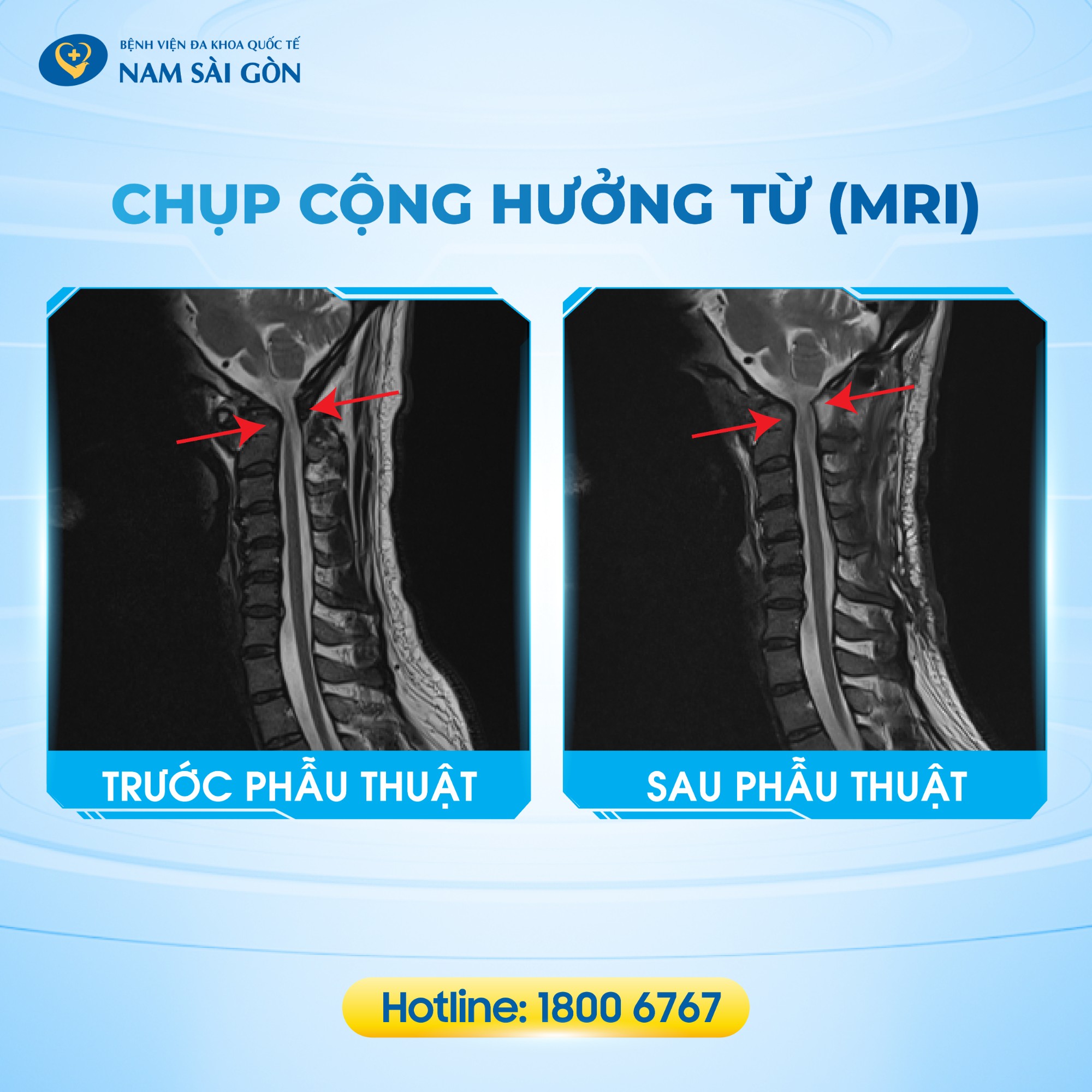CERVICAL SPINE INJURY: A LIFE-THREATENING CONDITION WITH RISK OF PERMANENT PARALYSIS
-
Author: BỆNH VIỆN ĐA KHOA QUỐC TẾ NAM SÀI GÒN
-
21/03/2024
-
298
“Thanks to Dr. Tuan, I can now walk again just like before. It feels like a new life has opened up for me. I can live normally again, and my wife no longer has to take care of me like she used to”.
Cervical Spine Injury: A Life-Threatening Condition With Risk Of Permanent Paralysis
Mr. S. (40 years old, Cambodian) was admitted to Nam Sai Gon International General Hospital with severe loss of mobility. He had been experiencing weakness and numbness in all four limbs for the past five years. Despite long-term medical treatment, his condition showed no improvement, prompting him to seek surgical care.
After clinical evaluation and imaging, Dr. Le Kham Tuan, PhD – Head of the Neurosurgery & Spine Department, diagnosed the patient with cervical spondylotic myelopathy, severe spinal canal stenosis, and destruction of the C2 odontoid process due to bone erosion.
Dr. Tuan shared: “This was a serious and very rare spinal condition. Fortunately, I had previously performed five similar surgeries at a national referral hospital. This was only the second such case operated at Nam Sai Gon International General Hospital. With our team’s experience and modern surgical facilities, we were confident that we could restore the patient’s mobility and help him return to normal daily life”.

First Surgery: Endoscopic Transnasal Removal of The C2 Odontoid and Inflamed Bone to Decompress the Spinal Cord
With support from modern technologies such as surgical navigation, high-speed drill systems, hemostatic agents, and nasal endoscopes, the surgical team led by Dr. Le Kham Tuan, PhD performed a minimally invasive transnasal endoscopic surgery.
Compared to the traditional transoral microscopic approach, this method minimizes damage to healthy brain structures, blood vessels, and nerves; reduces surgical time; lowers risk of complications; and speeds up recovery.
Just one day after surgery, the patient was able to eat normally and reported minimal postoperative pain.
Second Surgery: Occipitocervical Fusion and Spinal Stabilization
Six days later, the patient underwent a second open surgery to stabilize the cervical spine, which had become unstable following the first operation.
- One day post-op: The patient could sit upright
- One week post-op: He took his first steps again and was discharged in stable condition

On the day of discharge, Mr. S. emotionally thanked the entire medical team:
“Thanks to Dr. Tuan, I can now walk again just like before. It feels like a new life has opened up for me. I can live normally again, and my wife no longer has to take care of me like she used to. I sincerely thank everyone at Nam Sai Gon International General Hospital”.
When to suspect cervical spine degeneration
According to Dr. Le Kham Tuan, PhD, cervical spine degeneration is more likely in elderly individuals, people with jobs that strain the neck, those with a history of neck injury, and smokers.
Early symptoms may include:
- Tingling, numbness, or weakness in the arms and legs
- Poor coordination
- Difficulty walking
- Loss of bladder or bowel control
These signs often point to spinal cord or nerve root compression due to spinal canal narrowing, and if left untreated, may lead to permanent disability. Therefore, prompt evaluation and surgical treatment are essential to prevent irreversible neurological damage.
Nam Sai Gon International General Hospital
No. 88, Street No. 8, Trung Son Residential Area, Binh Hung Commune, Ho Chi Minh City.
Hotline: 18006767
info@nih.com.vn
Last updated: 18:17 31/07/2025






